He spends his money on eating hospitals & cattle breeding & is to boot a real good sort (not mine a bit)! (Edwin Lutyens to his wife, Lady Emily, 23 April 1904. RIBA Library ref 6/8/27).
The Hon. Edward William Berkeley (E.W.B.) Portman, eldest son of the 2nd Viscount Portman of Bryanston, Blandford Forum, Dorset, was born in the parish of St. Martin-in-the- Fields, London, on 30 July 1856. He was baptised on 17 October at the family seat of Bryanston, then the largest estate in Dorset and the home of E. W. B.’s grandfather, Edward Berkeley Portman (1799-1888), a former politician turned agricultural improver created 1st Baron Portman in 1837. Since inheriting from his father, also named Edward Berkeley Portman (1771-1823), E. B. Portman had shrewdly managed the family’s affairs, freeing them of debt and significantly enlarging their largely agricultural holdings. By 1883 the now 1st Viscount Portman could lay claim to 1,754 acres of land in Devon, 7,798 in Dorset, and 24,339 in Somerset, generating an estimated annual rental income of almost £46,000 (£5,520,000 today). The agrarian empire was to be short-lived, however.
From the early 1900s Portman lands were gradually sold off as death duties, first levied on agricultural land in 1894, mounted. (Six Viscounts died between 1919 and 1948.) Bryanston was sold in 1927 for £35,000 and three years later 1,500 acres of prime farmland in the Somerset parishes of Durston, Hatch Beauchamp and North Petherton fell under the hammer. Then, in December 1944, Hestercombe House and grounds (now about 234 acres in extent with 15 houses and cottages) along with most of the remainder of the Portman (Somerset) Estate, comprising 10,488 acres (4,244 hectares), was transferred to the Commissioners of Crown lands by the Hon. Gerald Berkeley Portman (1875-1948), the younger of Teddy Portman’s two surviving brothers.
Six years later 3,800 acres in Dorset had to be sold off to meet Gerald’s own death duties (he became 7th Viscount Portman in 1946) which amounted to a then record £7,582,119. What remains of the Portman family’s wealth today is centred on the Marylebone estate in central London. Acquired in 1532 by Sir William Portman (c.1498-1557) and once stretching from Oxford Street to the Regent’s Canal, the eleven fields that originally constituted the estate covered an area of about 270 acres. The 110 acres that remain today are managed from the Portman Estate office at 40 Portman Square, prime rental property that still ranks the Portman family as one of the wealthiest landlords in England.
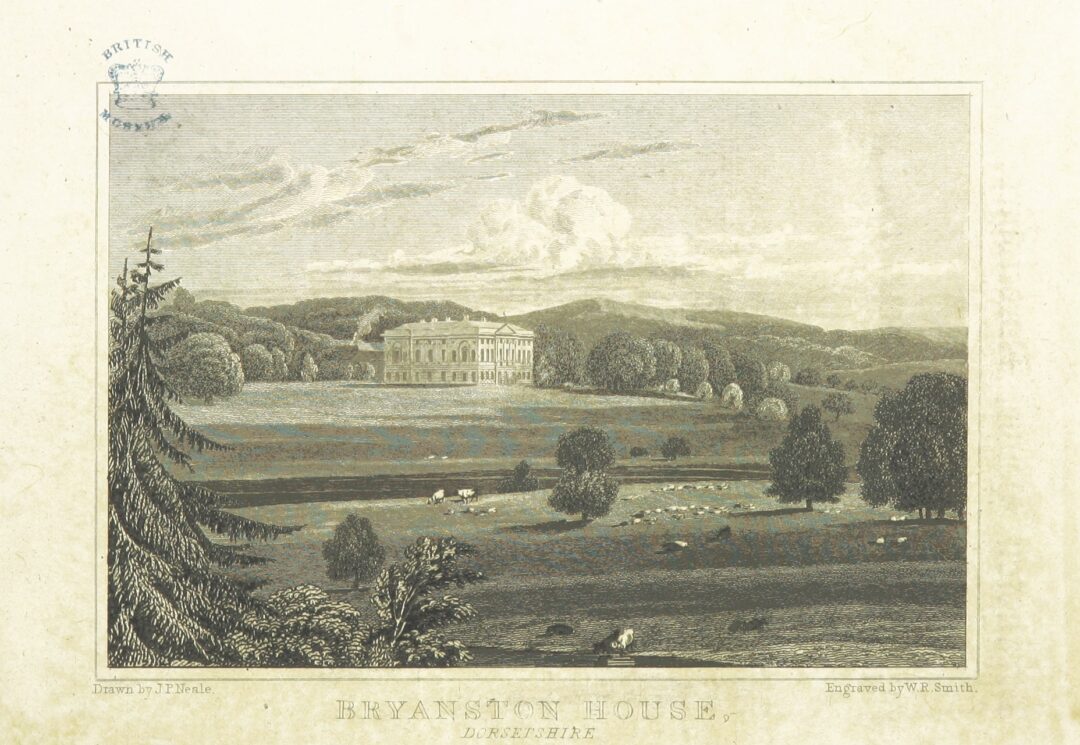
As the heir to a substantial fortune, it is not surprising that ‘Teddy’, as he also came to be known, was sent to the finest schools. After first studying at Eton like his father and grandfather before him, he followed the latter’s example once again and matriculated at Christ Church, Oxford, in 1875, leaving in 1878 to receive a commission in the Dorsetshire Yeomanry. The previous year on the 14th of August, E.W.B Portman was the cause of an elaborate coming-of-age celebration held at what would one day become his permanent home, Hestercombe.
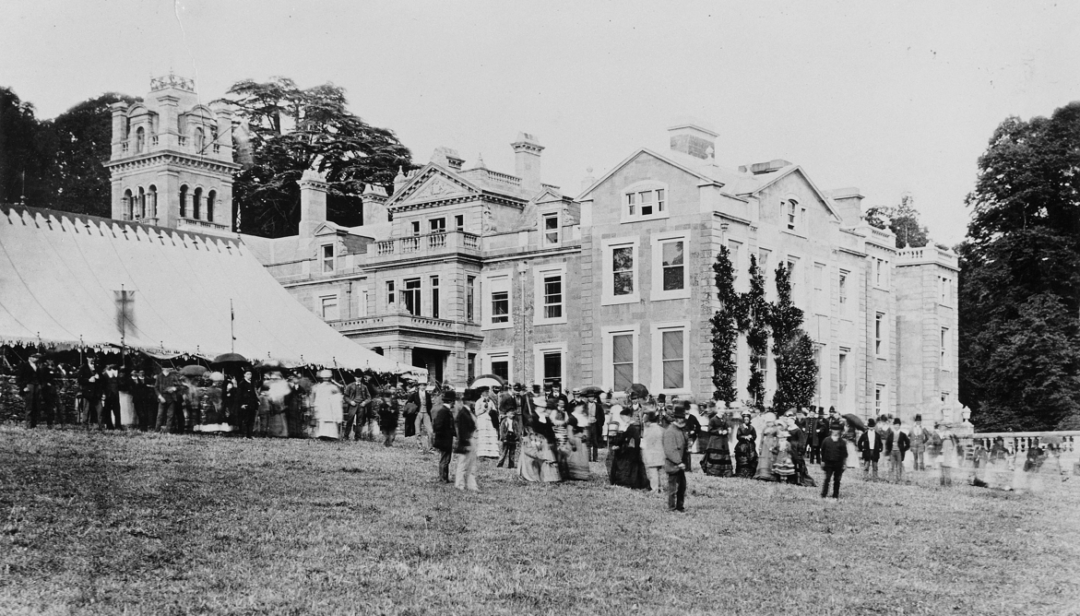
Under sunny skies and with the Somersetshire and Devonshire tenantry and their families in full attendance, acquaintances were renewed and relaxation sought about the spacious grounds surrounding Hestercombe House. In the newly completed Terrace Garden adjoining the south front members of the Portman family, including the 1st Viscount Portman (who had personally laid out the Garden two years earlier), received their guests against a stunning floral backdrop ‘it being literally a many lined carpet of glorious colouring – purple and crimson, gold and green’. Then, at 3:00 pm, five hundred guests duly sat down to a hardy luncheon of recherche description in tents erected in front of the House while the band of the West Somerset Yeomanry Cavalry under the supervision of Mr. Summerhayes played ‘sweet music’ and marched about the grounds. ‘The Hon. Mr. Portman, M.P. for Dorset and father of the heir to the family fortune, presided, and on his right sat Mr. E. W. B. Portman to whom all had met to do honour.’
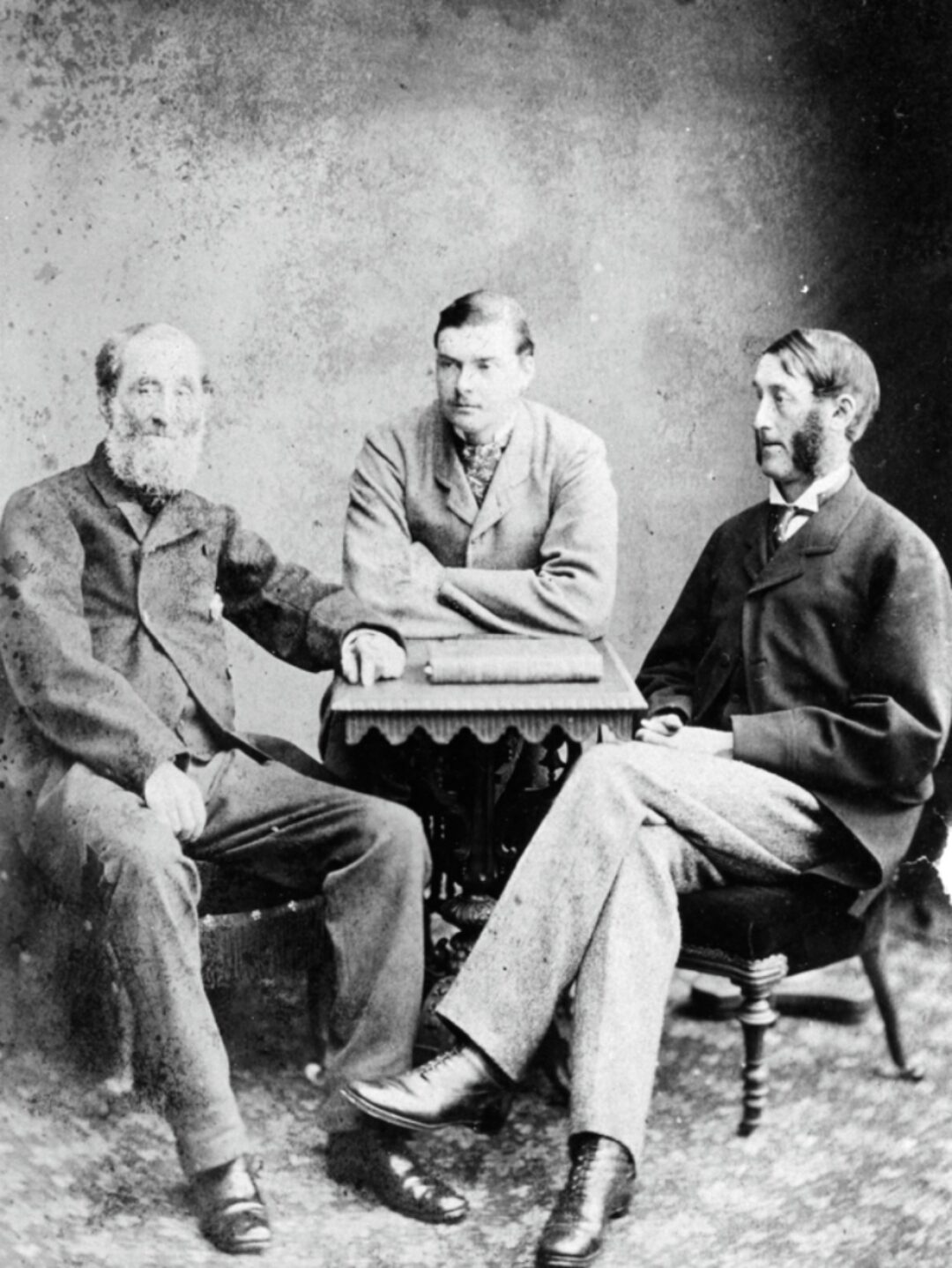
Following the meal, and before tea was served at 6 o’clock, ‘cigars and tobacco were supplied to any one who felt inclined’ and vigorous country dancing commenced behind the House, thereby ‘affording employment for busy feet’. Those with more athletic tendencies ‘urged the flying ball’ (played football). On hand to maintain order, Supt. Goldsmith and ‘a small body of police’ witnessed only harmony and contentment as speeches flowed, pipes were lit and toasts were made, all confirming the munificence of the House of Portman and rejoicing in the majority of its future heir. E.W.B., in acknowledging an exceptionally kind congratulatory address from Thomas C. Colthurst expressed his desire that ‘the name of Portman continues to be associated with the principles of justice, freedom, and liberality’. An evening fireworks display by Messrs. Brook of London then concluded ‘one of the most brilliant al frescoe fetes that this neighbourhood has ever witnessed’.
The bride was married in a magnificent dress of cream coloured crêpe de Chine trimmed with gold passimenterie and bonnet to match. Her ornaments were a necklace of a single row of pearls, and a pearl and diamond star brooch, the gift of the bridegroom, along with a bouquet of Marechal Niel roses tied with streamers . . . ('Marriage of the Hon. E. W. B. Portman and the Hon. Mrs. Eustace Vesey', The Yorkshire Herald, 9 July 1892, p. 8.)
By 1892 it was time to settle down. On the morning of 7 July E. W. B. Portman married Constance Mary Lawley, widow of Captain the Hon. Eustace Vesey (1851-86) of the 9th Lancers, Abbey Leix, County Laois, Ireland, and third daughter of the late Beilby Richard Lawley, 2nd Baron Wenlock and Lady Elizabeth Grosvenor of Escrick Park, York, then one of the largest estates in the north of England (22,000 acres). With full choral service the young couple were wed at the Church of St. Peter and St. Paul in West Clandon, Surrey, by the bride's middle brother, the Rev. and Hon. Algernon George Lawley, M.A., vicar of St. Andrew's, Bethnal Green, London. A breakfast attended by a few personal friends and family followed at nearby Clandon Regis, Guildford, the residence of the bride where ‘numerous, costly, and exceptionally handsome’ presents, were on display. These no doubt included a pair of Louis XVI silver candelabra, weighing 400 oz., and an antique silver punch bowl, both of which Lord Arlington had presented to Teddy the previous month on behalf of the 2nd Viscount Portman's Hunt and friends. Sitting down for the groom were E. W. B.’s parents, the 2nd Viscount and Viscountess Portman, three of his four surviving brothers and their wives (including the best man, the Hon. Henry Berkeley Portman) and his uncle and aunt, the 6th Earl and Countess Fitzwilliam of Wentworth Woodhouse, Rotherham, who had brought along their daughters, ‘the Ladies Fitzwilliam’.
Drinking to the health of the bride were Constance Lawley’s mother, Lady Wenlock, who had given her away, five of her eight siblings (the Rev. A. G. Lawley included), her former brother-in-law, John Vesey, 4th Viscount de Vesci and Constance’s cousin, the Hon. Henry George Grosvenor, son of Hugh Lupus Grosvenor, 1st Duke of Westminster, then probably the richest man in England. (The senior Grosvenor owned lands in Mayfair and Belgravia, London, but lived mainly at Eaton Hall, Cheshire where he raised race horses with great enthusiasm.) Also at the modest breakfast reception were Lord and Lady Stalbridge of Motcombe House, Shaftsbury, Dorset, he a career Tory politician and former Parliamentary Secretary to the Treasury; Lt.-Col. Hon. Lewis Payn Dawnay and his wife of Beningbrough Hall, York, the ancestral home of the Viscounts Downe; the celebrated cricketer the Hon. Robert Lyttleton and his wife, Edith, who was a great friend of Constance Lawley; and Lady Selina Hervey, daughter of Richard Charles Meade, 3rd Earl of Clanwilliam, a diplomat and politician who had served as Under-Secretary of State for Foreign Affairs and Envoy to Berlin.
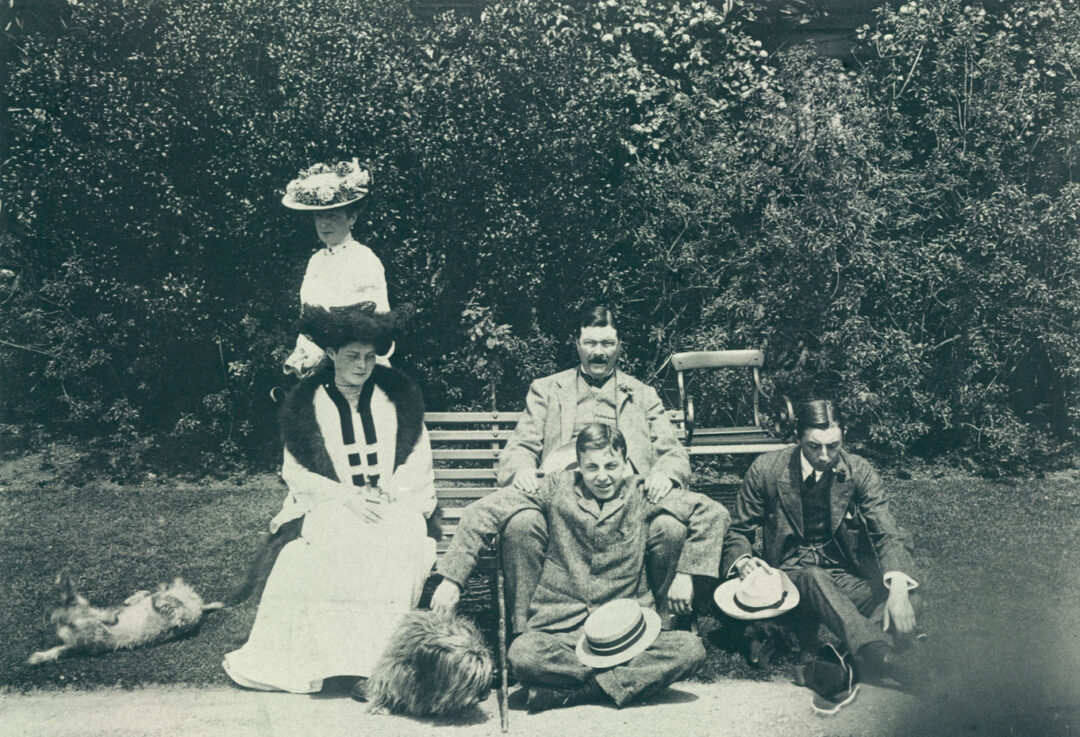
Very much in evidence at the wedding festivities were Constance Lawley’s three surviving sons by her first marriage to Captain the Hon. Eustace Vesey. The boys, then aged 7 (Thomas Eustace), 8 (Osbert Eustace) and 11 years (Ivo Richard) would soon discover ‘a kind and much loved step-father’ in E.W.B. Portman who shared with them his love of good sport (hunting, fishing, cricket), enrolled them in his old alma mater (Eton), and spoiled them with gifts. Thomas’s diary for 1902 records the receipt of a brace of pheasants from ‘Father’ in February (Thomas is now attending Eaton), mentions Teddy’s gift of a new rifle to Osbert in March, and enthuses about an Easter holiday outing in which Thomas, Osbert and Teddy rode to the top of the Quantocks to watch the West Somerset [Hunt] who were meeting at Aisholt. ‘They had a very poor day we came home early’ the now 17- year-old boy confessed. Ivo Richard Vesey’s Game Register for 1902-03 documents regular shooting excursions with his stepfather, two brothers and dog, Keen, to Hestercombe, Orchard Portman, Staple Fitzpaine, Bickenhall and Thurlbear, the last four properties of the 2nd Viscount Portman southwest of Taunton and well-stocked with partridge, pheasant, rabbit, and grouse. Despite his clear dislike for dancing, and no doubt after some persuading from Constance, E. W. B. Portman gave a ball ‘on a grand scale’ in January 1902 for his eldest stepson who had come of age in December. ‘
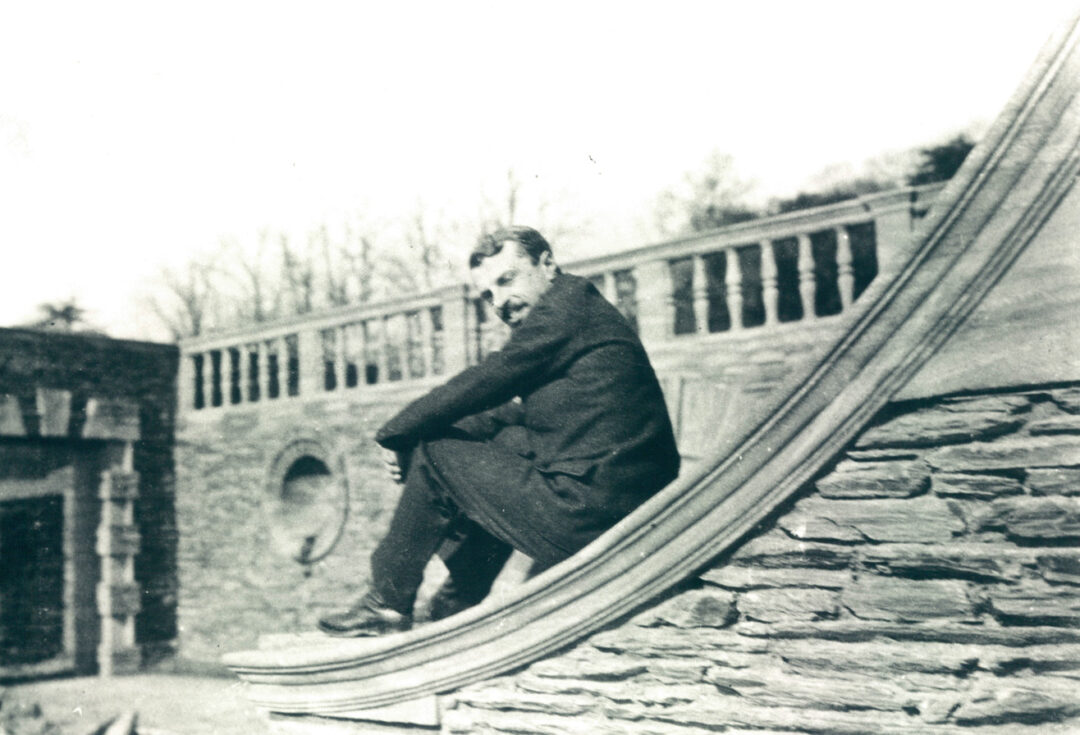
Among the many valuable wedding presents’ at the 5th Viscount de Vesci’s wedding three and half years later in April 1906 was: ‘From the Hon. E. W. B. Portman, set of plate (silver)’. (Ivo, who had succeeded to the title of 5th Viscount de Vesci in 1903, wed Georgiana Wellesley, daughter of Gerald Wellesley and Ada Martin of No. 33 Portman Square, London).
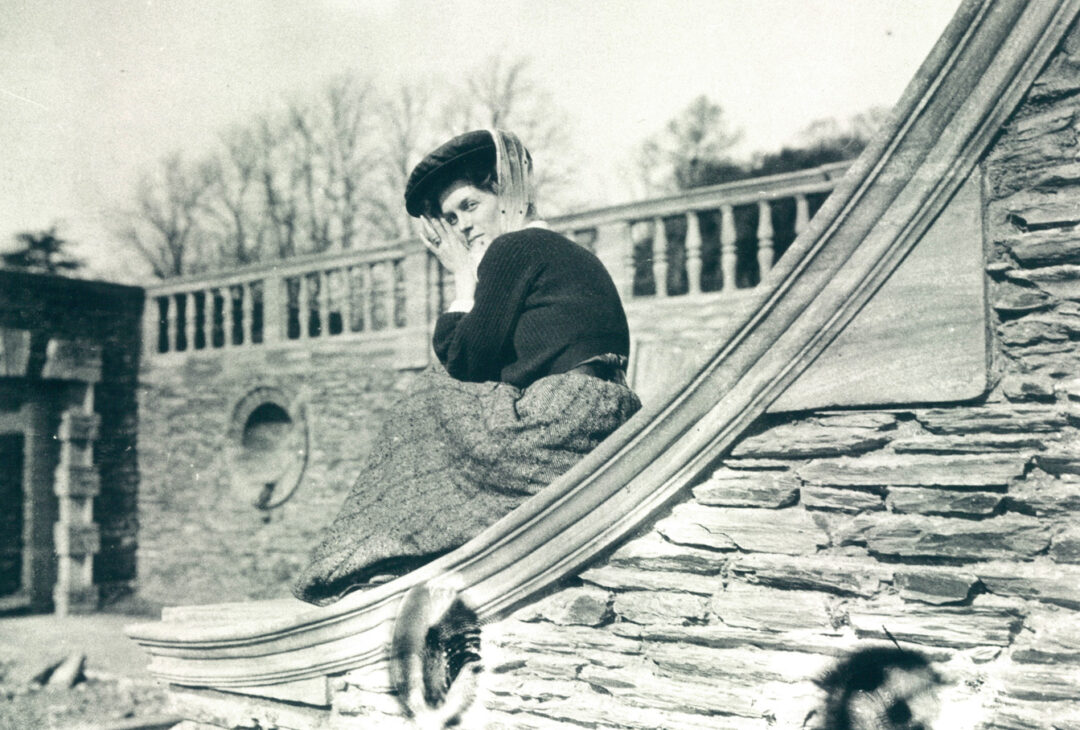
All three of Teddy’s step-sons embraced his love of cricket. When Hestercombe House challenged the Hestercombe Cricket Club on 7 September 1895, the House side won by 17 runs, thanks in no small part to the efforts of House stalwarts, the Hon. E. W. B. Portman, Master O[sbert] Vesey, and Master Ivo Vesey. Thomas played the popular game at both school and at home, indulging in numerous sessions of ‘silly cricket’ with friends and family members during the school holidays. As the youngest child, he is said to have been much pampered by Mrs. Portman who never really got over the premature death of her first son, Eustace Thomas Vesey (1878-82). As an adult Thomas would remain a familiar figure at Hestercombe, visiting often with his wife, Lady Cecily Vesey, daughter of the Earl of Kenmare of Killarney, and their three children. Perhaps inspired by their stepfather’s example Thomas and Osbert had successful military careers as officers in the British Army, receiving decorations for their gallantry during the First World War and retiring with the ranks of Colonel and Lieutenant-Colonel. (Teddy Portman spent 14 years with the Dorset Yeomanry Cavalry, achieving the rank of Major on 11 April 1891 before retiring in 1892.) For more on the contributions of the Vesey boys during the Great War see our blog, ‘From the Archives: Hestercombe in the First World War’.
The Yorkshire Herald newspaper concluded its newspaper coverage of the Portman Lawley nuptials by observing that 'early in the afternoon the Hon. E. W. and Mrs. Berkeley Portman left for Hestercombe, Taunton, the seat of Viscount Portman, where the early days of the honeymoon will be spent.' A short time later Teddy Portman was given the use of the 776-acre estate by his father, William Henry Berkeley Portman, who had succeeded as the 2nd Viscount Portman of Bryanston on the death of the 1st Viscount in 1888. From that date forward Hestercombe had been little used -- the 2nd Viscount visited but once a year, usually in May/June ‘for the season’. He stayed for less than a month in 1891. Teddy and Constance moved to their new home in December 1894, along with Mrs. Portman’s three sons, having been tenants of St. Giles's House, Lord Shaftesbury's family seat in Wimborne, Dorset, since their marriage two-and-a- half years earlier.
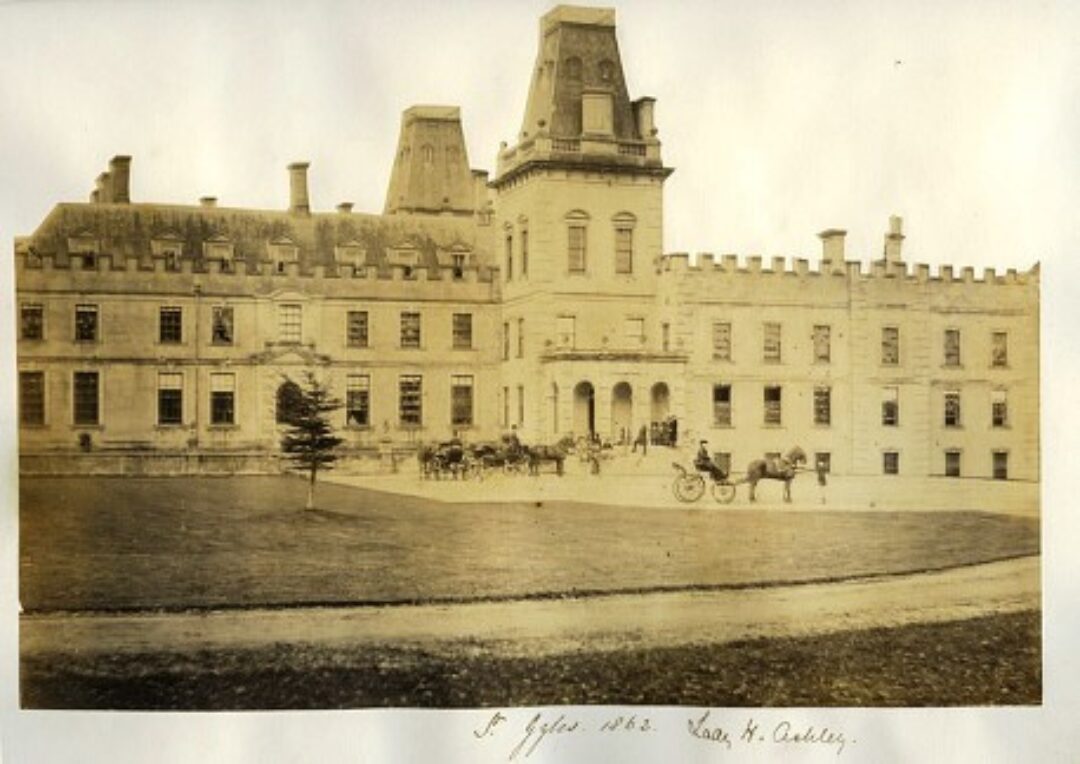
An advertisement to let St. Giles’s, published in 1892, described the House and grounds as then possessing 'numerous works of art, statuary etc and a quantity of genuine Chippendale furniture'. Vast domestic offices and stabling were also cited along with 'excellent walled-in kitchen gardens, vineries etc.; wide stretching lawns, an American garden, and exceedingly pretty grotto constructed at great cost over 100 years ago of shells of different kinds, an ornamental lake, woodland ride, the estate extending to an area of 17,000 acres'. Not bad for a rental. Back at Hestercombe the church bells of Kingston and Cheddon were rung in welcome and Mrs. Portman, at the suggestion of Mr. Keen, the Head Gardener, planted 'a small cedar tree close to the entrance of the mansion to take the place of a much larger one, which had to be cut down in consequence of its branches overhanging a part of the house and the space required for the extension of the mansion'.
Almost immediately on returning to Hestercombe, Teddy launched into a grand programme of building and agricultural improvement. As early as September 1894, The Somerset County Gazette could report on substantial additions to the House, claiming that ‘no fewer than 150 men have for some months been employed on the work and they are likely to be there for some time to come’. The ‘additions’ were by Henry J. Spiller of 31 Bridge Street, Taunton, and largely consisted of a new range of domestic offices which were added to the rear of the House (laundry, still room, bake house, knife house, enlarged kitchen, boiler house, workshops etc.). The wider estate, on the other hand, was virtually transformed. In less than ten years Teddy established a modern range of Boulton & Paul hothouses in the kitchen garden, improved Volis farm and stocked it with Berkshire pigs, built an iron clad chapel with bell tower and organ to the east of the House (St. Mary’s Church), erected a well-appointed Keeper’s Cottage with dog kennels in the woods to the northwest, and converted the mill building to a ‘Saw Shed’, later extending it to include a Dynamo House with a state-of-the-art hydroelectric turbine. A heightened sense of arrival to the estate was created by closing off the medieval track that crossed the parkland between Park Gate and Gotton in favour of a private approach that began on the estate’s southern boundary (Rowford) and passed by two newly built gate lodges (South Lodge & Middle Lodge) before gently weaving its way northwards to Hestercombe House.
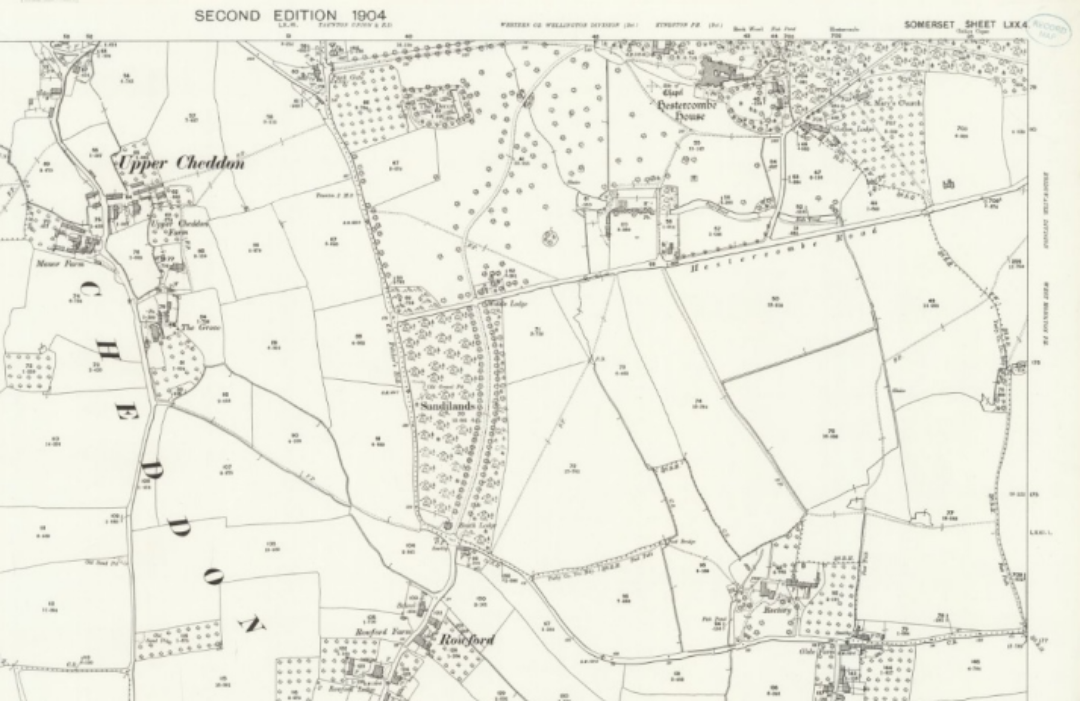
Other enhancements included a cricket pitch laid out near the modern day entrance to the estate, a model dairy built opposite the mill for Mrs. Portman and stocked with a fine herd of Jerseys, and an extension to the stables that added six loose boxes, possibly for polo ponies, to the north side of the courtyard (now The Stables Cafe & Lutyens Gallery). By 1903 the Portman’s two matching 10 hp cadillacs were being kept in a matchboard-lined garage with concrete floor and inspection pits built on the site of the present day picnic area and a three-bedroom Chauffeur’s Cottage, now the executive offices of the Hestercombe Gardens Trust, was in place nearby at the entrance to the stable block. By 1906 The Car Illustrated (No. 205, 25 April, p.307) could observe that Mrs. Portman had now travelled several thousand miles in her cadillac, ‘and says, indeed, that she does not know now how she ever got on without it’.
It may be useful to recount the points insisted upon by the Devon Cattle Breeder’s Society. Pedigree is given the first place, but the individual cow should have a head of moderate length, with a broad, indented forehead, tapering considerably toward the nostrils, which should be high and open; the nose creamy white; jaws and throat clean; ears thin; horns long, well matched and spreading, gracefully turn up, of a waxy colour, tipped with a darker shade. (‘The Hestercombe Devon Herd’, Country Life, No. 520, 22 December 1906, pp.893-895.)
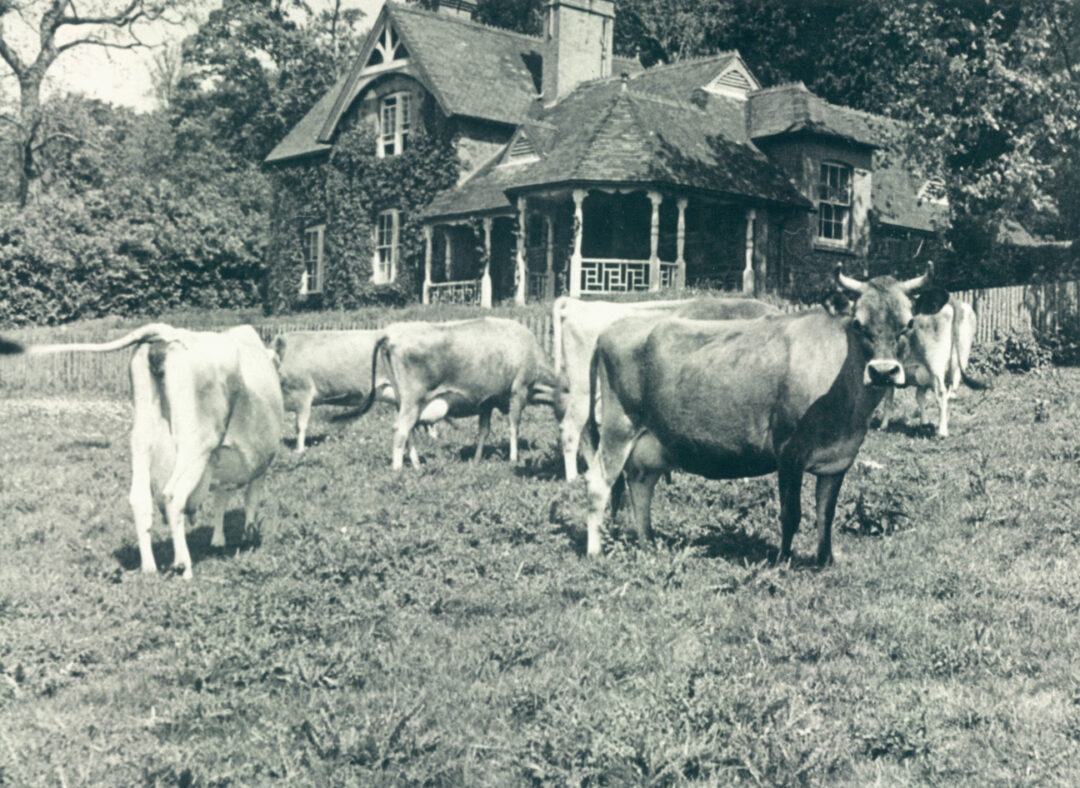
By 1906, Country Life magazine was sufficiently impressed with E. W. B.’s prowess as a cattle breeder to publish a feature in its December 22nd edition, THE HESTERCOMBE DEVON HERD. Teddy’s first herd, which was begun in 1894 and sold in May 1904 at a handsome profit, had realised great success in the show ring, amassing prize money of £677 in 1899 at the Royal Counties Show, Windsor, (Devon bull) and the Somerset County Show, Bridgwater (Devon cow). The replacement herd was the result of astute purchases made in September 1904 (Claude Portman’s celebrated Child Okeford herd), February 1905 (choice milking strain of C. Pratt, Tale, Devon), and June 1905 (Colonel A. F. Walter’s dispersal sale). Among the pride of the new herd, which at the time of printing numbered 133 head of cattle (of which 55 were cows), were Bearwood Rival, Caesar, Spinach, Tell Tale and the diminutive Sweet Pea. Pound Pink ‘Un, another triumph, was undefeated in the two-year-old bull class for 1906, claiming firsts at no less than six shows: the Devon County, Somerset County, Royal Counties, Bath and West, Southern Counties and Royal Show at Derby. Sadly, the fine beasts would have to be sold off less than five years later along with the rest of Teddy Portman’s prized herd. The heir to the Portman fortune died unexpectedly in April 1911 and, with Mrs. Portman’s blessing, the Devon cattle were sold on Friday 9 June at an auction held at Volis Farm, one of the Hestercombe estate’s three home farms. In his opening remarks to the many in attendance – there were 500 for lunch -- Mr. J. G. Peard, chief auctioneer of Messrs. C. R. Morris, Sons & Peard, North Curry, paid tribute to the well-liked country squire: ' . . . a friend of all and he was sure his [E. W. B.’s] memory would live as long as they lived and longer as a fine English gentleman who, it was a pleasure to know and meet.'
More will be said on E. W. B. Portman’s premature death in Part 2.
